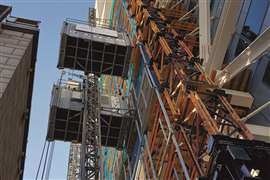Alba launches for new applications and architecture
June 19, 2024
Alba-Macrel Group is introducing new products to the hoist sector, and shares it views on developments in the market as new demands from modern architecture and applications provide challenges and growth opportunities.
This year, Alba-Macrel has introduced the PT 2000 model to its ever-growing line of transport platforms and has provided details for its next PT model launch.
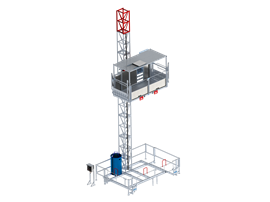 Alba-Macrel PT 2000 transport platform
Alba-Macrel PT 2000 transport platform
The PT 2000 can transport passengers and materials with a load capacity up to 2000kg. It was originally designed for the American market in collaboration with US distributor Bee Access, to meet their clients’ needs for a larger cabin with higher load capacity.
This model is designed for markets throughout the world and can reach heights of up to 250m at a speed of 22 m/min. Furthermore, it can feature advanced remote-control technology for management and diagnostics, thanks to Alba Telematics – the company’s new monitoring system.
To double its capacity, an additional cabin can be installed on the same square mast, forming a Twin version. Similarly, this model can operate in Combo mode, with another construction hoist simultaneously on the same mast).
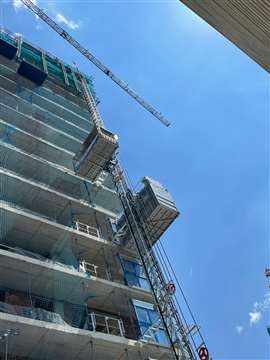 Alba-Macrel Combo of a PT 1800F- and EDC1600XL in Barcelona.
Alba-Macrel Combo of a PT 1800F- and EDC1600XL in Barcelona.
“This system is increasingly used in new construction projects and large rehabilitation works. Installing a Combo of construction hoists represents a money and time-saving solution for users, as the operation of two different rack-and-pinion hoists on the same mast increases construction capacity, thanks to their various uses and applications,” said the Alba-Macrel.
The process takes up less space than installing wo machines separately and allows for the combination of two different models with independent operation.
Next launch
The company is now working on another model within the same family: the PT 650. This transport platform shares similarities with the smaller model in the range, the PT 450, such as the square tube mast, which is also compatible with other construction hoists and mast climbers from the Alba-Macrel catalogue.
The PT 650 is unique for its larger cabin with greater loading capacity than the PT 450, allowing for the accommodation of a pallet and four passengers
What are the trends in modern construction hoist design?
Industry trends
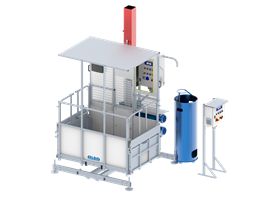 Alba-Macrel’s soon to be launched PT 650.
Alba-Macrel’s soon to be launched PT 650.
A number of trends have emerged in the dynamic landscape of construction hoists design, says Alba-Macrel.
“On one hand, manufacturers are integrating smart technologies into our lifting equipment to enhance operational efficiency.” This includes Alba Telematics, mentioned earlier, which the company is continuously working on.
“On the other hand,” adds the company, “The current market demands modular lifting equipment to achieve greater versatility when working at height. So, there is a need for construction hoists that can be expanded or have modules removed.”
One example of this is the manufacturer’s PTB 3800 transport platform.
Furthermore, adds Alba-Macrel is the growing emphasis on sustainability, with manufacturers incorporating eco-friendly materials and energy-efficient components into their designs. “Another important objective is reducing electrical consumption, leading to the design of increasingly lightweight equipment.”
Modern building designs
Asked how the design of modern buildings affects the design of hoist products, the company says modern architecture is playing a pivotal role.
“The proliferation of skyscrapers and complex structures demands lifting systems capable of adapting to diverse construction requirements.
“As buildings soar to great heights and adopt intricate designs, equipment must ascend and operate seamlessly, facilitated by more modular and higher-capacity extendable systems, particularly for irregular facades.”
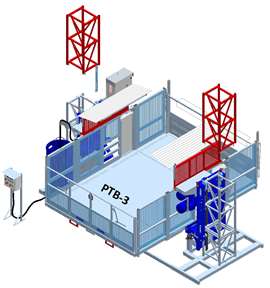
As the company goes on to point out, these construction techniques dictate the size, load, and functionality of the equipment, thus requiring the industry to be adaptable and offer a wide range of hoisting equipment in various sizes and applications.
A prime example is the PTB 3800, says Alba-Macrel as construction increasingly involves lifting prefabricated elements of significant dimensions and weights, leading to a growing demand for transport platforms with high capacities.
“Moreover, additional elements are being designed for the equipment to expand its usability, such as the monorail for the cast climbers, and various types of anchoring are being manufactured to accommodate different facade closure systems.”
Evolving applications
The hoist sector is experiencing significant growth, particularly concerning equipment for accessing work positions. “This is evident,” says the company, “in the development and expansion of tower cranes, port cranes, and specific equipment for the wind industry, crucial for the assembly and maintenance of constantly evolving infrastructures.”
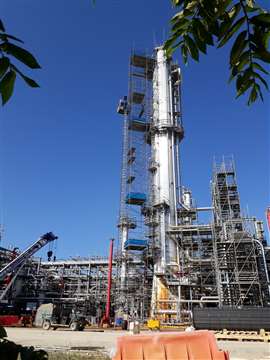 Alba-Macrel PT 1200 transport platform.
Alba-Macrel PT 1200 transport platform.
Additionally, there is a rise in demand for equipment for accessing mines and other complex environments, prioritising safety and efficiency. Another successful area of sectoral expansion is in the demolition of large chimneys, employing robot-controlled mast climbers for precise and secure tasks.
Alba-Macrel adds that in the industrial sphere, increasingly specialised solutions are being developed to meet the specific needs of different sectors, driving growth and innovation in the lifting and access equipment industry. Lastly, in the civil construction sector, specialized equipment is being implemented, especially in the rehabilitation of structures like bridge piers, where accessibility and safety are paramount. This trend underscores the sector’s adaptability in tackling evolving challenges and the needs of increasingly complex projects worldwide
STAY CONNECTED



Receive the information you need when you need it through our world-leading magazines, newsletters and daily briefings.
CONNECT WITH THE TEAM








